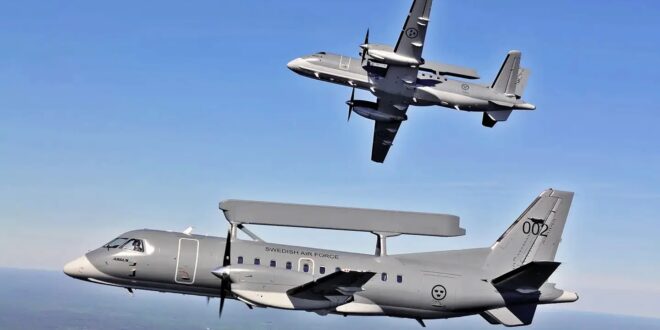NATO member Sweden on May 29 announced its largest military aid package for Ukraine so far will include modern radar surveillance planes as Russian attacks continued to target civilians, killing several people in three Ukrainian regions.
Two people were killed and three wounded early on May 29 when Russian troops shelled Krasnopil in the northeastern region of Sumy, the regional military administration reported on May 29.
Vadym Filashkin, the governor of the eastern region of Donetsk, said on May 29 that three civilians were killed and six were wounded by Russian bombardment the previous day.
In the northern region of Chernihiv, one person died in the hospital after being wounded by Russian shelling the previous day in Semenivsk, near the border, Ukraine’s Interior Ministry reported on May 29.
Ukraine’s air defense said it shot down 13 of the 14 drones launched by Russia early on May 29 at three of its regions — Mykolayiv, Kirovohrad, and Rivne. There were no immediate reports of casualties or damage.
The General Staff of the Ukrainian Armed Forces said in its daily summary on May 29 that the heaviest fighting had been observed in the areas around Kupyansk and Pokrovsk. It also said Russian forces continue their assault in the Vovchansk region, where Russian ground units were supported by guided aerial bombs launched from planes over Russia.
Russian troops “significantly intensified” their attack in the area around Kurakhiv, the General Staff noted, but the area around Pokrovsk continued to experience the largest number of clashes.
Meanwhile, the Russian Defense Ministry said in two separate statements on May 29 that planes from its Black Sea Fleet had destroyed three Ukrainian Crimea-bound sea drones in the northwestern part of the Black Sea.
In Stockholm, the Swedish government announced a package of 13.3 billion Swedish crowns ($1.3 billion) in military aid for Ukraine — the 16th since the start of Russia’s invasion and the largest so far.
The package includes two Swedish-made SAAB ASCC airborne early-warning-and-control aircraft.
Swedish Defense Minister Pal Jonsson said the two planes would have the “greatest effect on the Ukrainian air defense,” complementing and supporting the U.S.-made F-16 fighter jets pledged by several countries.
Stockholm has provided 43.5 billion Swedish crowns ($4.1 billion) in military aid to Ukraine since the start of Russia’s full-scale invasion in February 2022.
The Swedish donation was the third secured by Ukraine this week, following similar packages pledged by Spain and Belgium during visits by President Volodymyr Zelenskiy.
The Belgian donation included a pledge of 30 F-16s to be delivered to Kyiv by 2028, with the first aircraft expected to arrive later this year.
Ukraine’s air defenses have been struggling with insufficiently modern air-defense systems and dwindling supplies of antiaircraft ammunition needed to counter an increasingly intense Russian bombardment, mainly in the northeastern Kharkiv region, where Russian President Vladimir Putin has claimed Moscow wants to establish a “buffer zone” against cross-border Ukrainian attacks on military targets inside Russia.
Ukraine has complained that some donors, chiefly the United States and Germany — have banned the use of modern Western missile systems by Ukraine to attack targets inside Russia.
However, French President Emmanuel Macron, EU foreign policy chief Josep Borrell, and NATO Secretary-General Jens Stoltenberg have been in favor of such strikes on military facilities located just across the border and used by Russia to bomb Ukrainian cities and civilian infrastructure.
However, Yuriy Sak, an adviser to Ukraine’s minister of strategic industries, on May 29 told Bloomberg that Kyiv had used British-supplied missiles on targets inside Russia after securing London’s approval.
“We already have a precedent. For example, Great Britain — they have already allowed Ukraine to use the long-range Storm Shadow missiles that they supply. And we successfully use them,” Sak said.
 Eurasia Press & News
Eurasia Press & News




